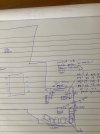oOBurrowsOo
Member
- Joined
- Nov 2, 2022
- Messages
- 5
- Likes
- 3
I have bought the teac NT 701 (streaming dac pre) and matching AP 701 (power) amp. I have bought them because the components supposed to measure better as my arcam sr250 (as some say measure bad in the channel separation department) and thus have better sound on my Dynaudio special forties.
The manual states the NT 701 has an excellent pre amp build in.
On short term the nt 701 sounds fantastic, but on long term this unit just has no soul. It has a small soundstage (compared to the more expensive NAD M23) and less expressive vocals (compared to the arcam). There is nothing bad about the (extended) high-range though. When I go down in the Dynaudio range (evoke) this gets better because the imaging on those speakers is better so it gets some things it stands out.
From youtube reviews some dudes rave over Dynaudio products to improve in soundstage/soul with a tube preamplifier. I though have no knowledge of elektrics. Should I buy a preamplifier or does it make sense to place lets say a primaluna preamplifier between the NT701 (streaming dac pre) and AP701 (dual mono power amp)? Or is this already handled by the preamplifier in the teac?
regards Burrows
The manual states the NT 701 has an excellent pre amp build in.
On short term the nt 701 sounds fantastic, but on long term this unit just has no soul. It has a small soundstage (compared to the more expensive NAD M23) and less expressive vocals (compared to the arcam). There is nothing bad about the (extended) high-range though. When I go down in the Dynaudio range (evoke) this gets better because the imaging on those speakers is better so it gets some things it stands out.
From youtube reviews some dudes rave over Dynaudio products to improve in soundstage/soul with a tube preamplifier. I though have no knowledge of elektrics. Should I buy a preamplifier or does it make sense to place lets say a primaluna preamplifier between the NT701 (streaming dac pre) and AP701 (dual mono power amp)? Or is this already handled by the preamplifier in the teac?
regards Burrows

